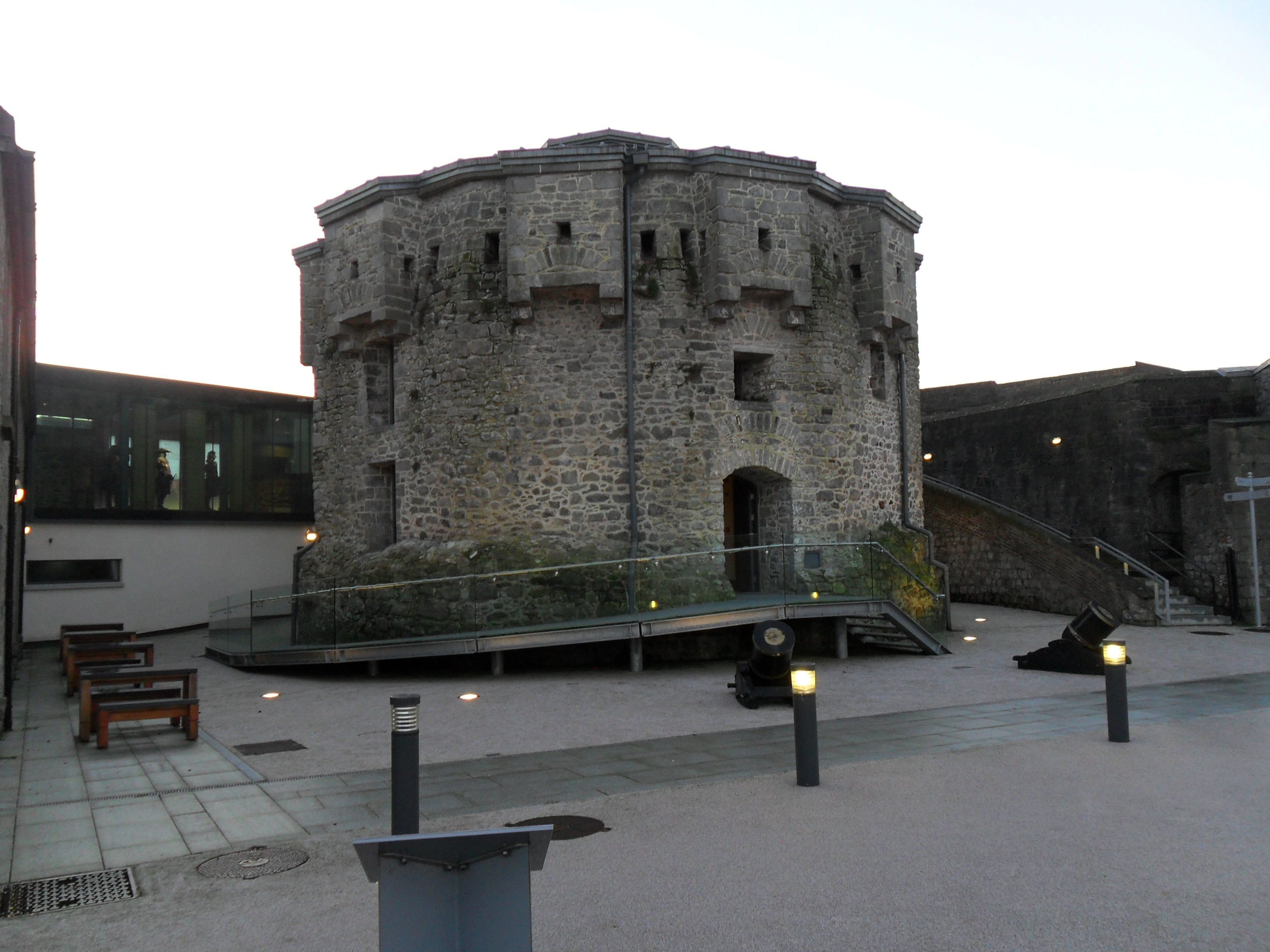Athlone Castle on:
[Wikipedia]
[Google]
[Amazon]
Athlone Castle, sometimes known as Adamson Castle, is a

castle
A castle is a type of fortified structure built during the Middle Ages predominantly by the nobility or royalty and by military orders. Scholars debate the scope of the word ''castle'', but usually consider it to be the private fortified r ...
located in Athlone
Athlone (; ) is a town on the border of County Roscommon and County Westmeath, Ireland. It is located on the River Shannon near the southern shore of Lough Ree. It is the second most populous town in the Midlands Region with a population of ...
, County Westmeath
"Noble above nobility"
, image_map = Island of Ireland location map Westmeath.svg
, subdivision_type = Country
, subdivision_name = Ireland
, subdivision_type1 = Province
, subdivision_name1 =
, subdivis ...
, Ireland
Ireland ( ; ga, Éire ; Ulster-Scots: ) is an island in the North Atlantic Ocean, in north-western Europe. It is separated from Great Britain to its east by the North Channel, the Irish Sea, and St George's Channel. Ireland is the s ...
, dating from the 12th century.
History
The earliest recorded "castle" of Athlone was a wooden structure built in 1129, by King Tairrdelbach Ua Conchobair ofConnacht
Connacht ( ; ga, Connachta or ), is one of the provinces of Ireland, in the west of Ireland. Until the ninth century it consisted of several independent major Gaelic kingdoms ( Uí Fiachrach, Uí Briúin, Uí Maine, Conmhaícne, and ...
, possibly on the site of the present castle. The stone castle which survives today dates from 1210 and was built for King John by his Irish Justiciar, Bishop John de Gray of Norwich. It was built to defend the crossing point of the river at Athlone and to provide a bridgehead to facilitate the Norman advance into Connaught.
The castle of 1210 was a free-standing polygonal tower built on a newly built (or existing) ‘ motte’ or man-made hill. This tower, though greatly altered, can still be seen as the central keep or ‘donjon’ of the castle today. At the time the castle was built on the Shannon, as it passed through Athlone, was very different from today. It is likely that in the early days of its existence the castle enjoyed the protection of a fosse or moat.
The castle was greatly fortified in the late 13th century (c1276) when the original ‘motte’ was surrounded by a curtain wall with three-quarter round towers (or drum towers) at the corner. These features, again greatly rebuilt, still survive today. The castle was reconstructed by Sir William Brabazon in 1547. The external walls and towers came under heavy fire during the Sieges of Athlone in 1690-91 and were later destroyed when lightning struck the castle in 1697. The castle as we view it today shows signs of extensive remodelling during the Napoleonic era
The Napoleonic era is a period in the history of France and Europe. It is generally classified as including the fourth and final stage of the French Revolution, the first being the National Assembly, the second being the Legislativ ...
when it was modernised and adapted for artillery. Today the squat drum towers are somewhat reminiscent of the Martello towers (again of the Napoleonic era) which are found along the east coast, near Cork and to a lesser degree, on the west coast of Ireland.
The large scale Ordnance Survey map of 1874 names some of the features which were then extant on the castle. These include: Officers’ quarters & soldiers’ quarters; master gunners’ quarters; guardhouse; ablutions room; cookhouse; kitchen; guardhouse and draw bridge. The officers’ quarters and soldiers’ quarters were located in the five-bay, two-storey barrack building which overlooks Main Street. This late Georgian building dates to c1810.
A careful examination of the Castle still reveals many interesting features including the shape of the ‘sally gate’ in the wall of the castle overlooking the Shannon; a bow loop recalling the era when the castle was protected by archers, in the wall facing into Castle Street as well as gun-embrasures and pistol loops on the walls protecting the entrance ramp. One important feature which disappeared in the 20th century was the drawbridge which survived until the 1940s.
The Keep of the Castle is a National Monument. The castle which had been part of the defences of Athlone for 750 years became the home of a museum run by the Old Athlone Society in 1967 and of a modern visitor centre developed by Athlone Urban District Council in 1991. Since 2012 it is managed by Athlone Arts and Tourism. Athlone Castle is pivotal to the understanding of the development of the town of Athlone, linking the modern Athlone with its Norman founders.
Refurbishments
Athlone Castle has reopened as of 2012 following a multimillion-euro renovation to transform the castle into a state-of-the-art, multi-sensory visitor experience. It features eight exhibition spaces pursue both a chronological and thematic sequence including 3D maps, audio-visual installations and illustrations by renowned illustratorVictor Ambrus
Victor Ambrus (born László Győző Ambrus, 19 August 1935 – 10 February 2021) was a Hungarian-born British illustrator of history, folk tales, and animal story books. He also became known from his appearances on the Channel 4 television ...
(best known for his work on Channel 4
Channel 4 is a British free-to-air public broadcast television network operated by the state-owned Channel Four Television Corporation. It began its transmission on 2 November 1982 and was established to provide a fourth television service ...
’s archaeological television programme ''Time Team
''Time Team'' is a British television programme that originally aired on Channel 4 from 16 January 1994 to 7 September 2014. It returned online in 2022 for two episodes released on YouTube. Created by television producer Tim ...
'').http://www.athlone.ie/athlone-news/athlone-castle-to-open-on-6th-november-2012
References
{{Athlone National Monuments in County Westmeath Castles in County Westmeath